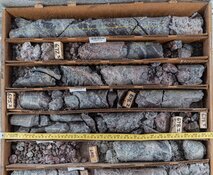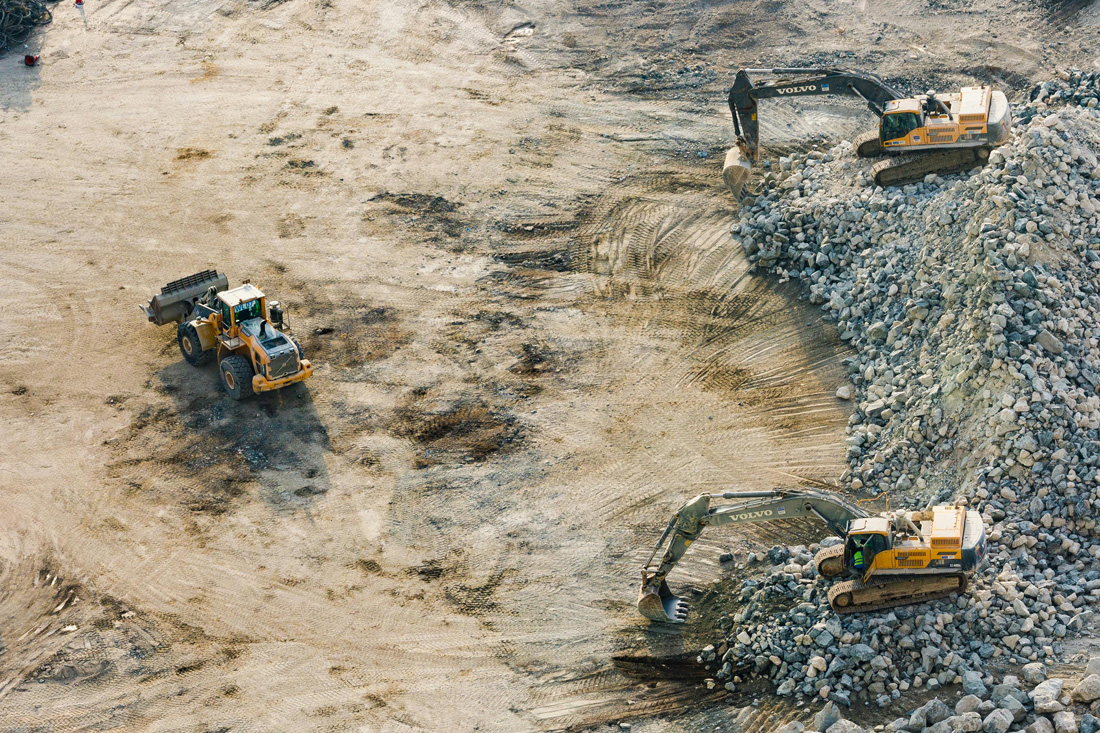John Kaiser: Historically, REE prices have been very low due to China's abundant resources and its ability to produce them very cheaply. China is aware that it could become the world's biggest polluter when its economy eclipses that of the U.S. China is very concerned about making sure it has the raw materials on hand to assure its clean-energy future. The supply restrictions China introduced a couple of years ago were part of a campaign to clean up and consolidate its high-pollution industries. Those restrictions resulted in spectacularly high REE prices for export and substantially higher prices within China. Since July 2011, the drop in demand and China's inability to control smuggling resulted in a pullback in REE prices. To some degree, I think China wants its monopoly to end. China's ambitions go far beyond squeezing a few profits out of a market it controls.
All of this was a wake-up call. Companies all over the world realized that their new technologies can no longer rely on cheap REEs from China. Toyota's deal with Matamec, which is essentially a 100% offtake agreement, is critical to Toyota's plans to continue manufacturing hybrid and electric cars over the coming decades.
What distinguishes [promising] projects is a full spectrum of rare earths from lights to heavies. China's natural rare earth abundance is skewed toward LREEs. China's bounty of HREEs are restricted to a group of rapidly depleting low grade clay deposits in southern China. While it is questionable that the world needs any more major light rare earth mines, bringing heavy rare earth supply on-stream is in the interest of everybody, including China.
The U.S. government has recently made a more meaningful investment in REE production, but the initial reaction from Washington was, some felt, belated. Michael and Chris Berry of Morning Notes explained the roots of the policy dysfunction in their Jan. 10 interview, "Solving Critical Rare Earth Metal Shortages."
Michael Berry: It's just now starting to dawn on Washington that we don't have a stockpile. We had a stockpile through World War I and World War II that was necessary to our national security. The U.S. was the biggest producer of rare earth elements in the 1970s and 1980s. But then we allowed China to undercut our prices and we shut down the Mountain Pass mine, which was one of the largest if not the largest producer of rare earths in the world. We lost not only production and access to REEs, which are critical for weapons systems, automobiles, alternative energy and a number of other applications, but we lost the processing chain that actually integrates and creates the metal, creates the alloy and magnets, and integrates it into material. China now controls these markets. There are four or five pieces of legislation pending in Washington, but it will take a decade or more to replace and rebuild these crucial supply chains.
Chris Berry: When the Soviet Union collapsed in 1991, the idea of a unipolar world came into vogue and I think the United States took its eye off the ball by selling off stockpiles of numerous metals. Security of supply was not viewed in the same light as it was during the Cold War. Labor was offshored, which minimizes costs and fattens balance sheets. But the U.S. made a strategic mistake when we offshored technology as well. Other countries around the world now have access to this intellectual property and are using it to build their own industrial and manufacturing bases. It's going to be quite a while before the United States regains its footing, but we are seeing moves recently to rectify this situation.
TCMR: How involved should the U.S. government be in the metals supply chain?
CB: There is a lot of mistrust and antipathy toward the government getting involved in what are traditionally viewed as private-sector activities. But there is a role for the government to encourage investment with respect to critical and other metals, whether or not it centers on loan guarantees or tax breaks, for instance. Government-run and private-sector defense companies require these raw materials that we are depending on foreign countries to supply us with. However, I'm not entirely convinced as to how involved government should be. It's a very slippery slope.
Hundreds of REE companies were born as the rift widened between U.S. and Chinese economic interests. Luisa Moreno of Euro Pacific Canada gave us some pointers on REE stock evaluation in her March 20 interview, "Winning the Rare Earth Economic War."
TCMR: The sheer number of early-stage projects presents a challenge for potential investors. How can investors pick which companies might be successful? What should they focus on when there are so many moving parts—the management, the location, the metallurgy and the different elements themselves?
Luisa Moreno: To start, investors should be looking at the same factors they usually use to assess mining companies. Beyond that, the most important factors for REE projects specifically are metallurgy and industry partnerships. However, it depends what investors are looking for. Essentially, there are some names in the rare earths space that are well known and respected. There are, however, lesser-known companies that have received far less love from the market, despite having made significant advances. . .those that are more advanced will be better positioned to secure development partners. That's very important because the PEAs coming out show that projects are capital expenditure intensive and industry partners can help finance these projects. Rare earths are not commodities; end users, usually through joint ventures, guide companies toward production of appropriate materials. It's a very complex space.
The list of metals that qualify as "critical" varies, but most agree that specialty, strategic or technology metals—anything deemed vital to civilization—falls under this umbrella.
One of the biggest mineral stories of 2011 and 2012 was graphite. In a Feb. 7 article titled "Graphite and Rare Earth Metals for the 21st Century," Institute for the Analysis of Global Security Senior Fellow Jack Lifton explained why graphite was turning investors' heads.
Jack Lifton: Graphite has traditionally been considered a boring, mundane industrial mineral, evoking thoughts of pencils, golf clubs and tennis racquets. Investors should think again. Traditional demand for graphite in the steel and automotive industries is growing 5% annually, and graphite prices have tripled. New applications such as heat sinks in computers, lithium-ion batteries, fuel cells, and nuclear and solar power are all big users of graphite. These consumers are beginning to place substantial demands on existing production—and over 70% of that production is from China, which is no longer selling this resource cheaply to the rest of the world as the country's easy-to-mine, near-surface deposits are becoming exhausted.
Graphite's criticality and potential scarcity has been recognized by both the United States and the European Union, which have each declared graphite a supply-critical mineral. Recently, the British Geological Survey ranked graphite right behind the rare earths and substantially ahead of lithium in terms of supply criticality. Clearly, there is much more to graphite than pencils.
TCMR: What about graphite makes it so important to all these end users?
JL: Graphite and diamonds are the only two natural polymers of carbon. Both are very strong, can withstand extreme heat, and resist attack from chemicals and corrosion. While a diamond is a three-dimensional crystal structure of carbon, graphite possesses a two-dimensional flake crystal structure. Graphite is also a very good conductor of heat and electricity. Due to its amazing chemical and physical properties, new industrial, commercial and high-technology uses for graphite are constantly being discovered.
The lithium-ion battery is one of the fastest-growing uses of graphite. Each one actually contains greater than 10 times more graphite than lithium. These batteries are already widely utilized in the consumer electronics industry in devices like mobile telephones, laptop and tablet computers, and media players. Other new technologies like fuel cells, will also drive demand.
In the Oct. 9 article "Extraordinary Stories," Jennings Capital Analyst Ken Chernin pointed to tungsten and fluorspar as growing markets investors should consider.
Ken Chernin: Tungsten is historically known as a "war metal" because it was primarily used in ballistics. Demand and pricing followed the historical path of conflict. In recent years, the biggest market has become something called cemented carbide. It is used primarily in specialty tools that need to withstand excessive heat and require extreme durability, like drill bits for oil and gas and mineral drilling. Right now, tungsten's demand is closely linked to gross domestic product, especially with China. The reason I like tungsten is I see it changing from a demand story to a supply story.
Fluorspar is used throughout the world, primarily by the chemical industry, for refrigerants and foam products and in the manufacturing of aluminum, Teflon, refined petroleum products, glass and medicine. There are virtually no substitutes for many of its uses, and it is an essential ingredient in hydrofluoric acid.
TCMR: Are you seeing potential supply problems?
KC: Yes, I do. Tungsten, when I first looked at it, read like a rare earth elements (REEs) story in that 86% of global supply came from China. In REEs, it's around 95%. The Chinese government seems determined to restrict exports because it has made a significant investment in downstream, higher-margin industries using tungsten. Therefore, it is determined to keep what resources it has for itself.
I found that only three tungsten mines outside of China have operated without extended closures in the past 60 to 70 years. As a result, there was an enormous loss of tungsten-specific knowledge. Tungsten mining and processing is very unique. Today, companies with brownfield or greenfield projects will likely have trouble finding the right people. Another dynamic is that the higher-grade deposits have been depleted. A large proportion of the new projects are very low grade. Some are 0.09% grades, which is approximately three times lower grade than some tailing recovery projects.
Then, in a Nov. 13 article, The Mercenary Geologist Mickey Fulp outlined "Why Copper Is a Critical Metal."
Mickey Fulp: Copper's always critical. In my opinion, some so-called experts have bastardized the idea of what critical metals actually input to our industrial society. Copper is absolutely one of the critical metals because it is so tied to the functioning world economy. For example, you can't transmit electricity without copper. Ask the people in New York and New Jersey right now if transmission of electricity is critical. . .
This summer I wrote a "Mercenary Musing" called "Long-Term Fundamentals of the Copper Market"; I'm very bullish on the long-term copper outlook. "Short-Term Fundamentals of the Copper Market" followed about a month later. In it, I was equivocal on the direction of copper in the short term, and by the short term, I'm generally looking one to six months out. So now we're four months into that time frame and I still have the same view of the copper market. It's relatively healthy, but it is not robust.
As we continue our coverage of the critical metals space, we want to hear from you! Use the comment feature on our interviews to tell us what you want to hear more about. What excites you? What critical metal do you have the most trouble finding reliable information on? What is the next critical metal, the under-the-radar commodity that we may all depend on without even knowing it? Let's find out together in 2013. In the meantime, happy holidays from The Critical Metals Report.



































